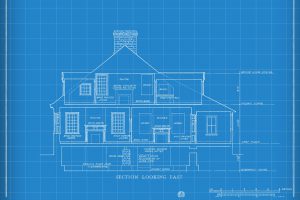If you are about to close real estate deals, you have likely wondered what factors can affect the value of an apartment. Does having a school nearby increase or decrease the property’s price? What about a park, hospital, or synagogue? Which public buildings influence the value of apartments in their vicinity, and how? These questions are explored in the article below.
Since noise is an environmental factor that disturbs residents, the value of an apartment located close to an elementary or high school is negatively affected by approximately 5% to 7%. An apartment facing classrooms is less impacted compared to one near a sports field or swimming pool, if such facilities exist. In cases where schools include many additional elements besides classrooms—such as tennis courts, soccer fields, or basketball courts that are used by local residents outside school hours—the decrease in apartment value may reach 10-12%.
Since kindergartens operate during hours that coincide with most people’s work schedules, proximity to a kindergarten usually does not affect apartment prices. Most kindergartens are housed in low-rise buildings, so the disadvantage of noise is balanced by the advantage of an open view. In some cases, a minor decrease of only 1-2% in property value may occur.
Noise nuisances from ambulance activity, along with increased congestion in parking areas and traffic, cause a 10-12% drop in the prices of apartments located in the first ring around a large hospital. On the other hand, properties in the second and third rings around the medical center benefit from a 5%-10% increase in value, due to higher demand from medical and nursing staff who want to live close to their workplace.
In the case of police stations, the impact on apartment values extends beyond the immediate first ring around the building, since police personnel usually prefer not to live close to their workplace. Adding to this are the noise from police sirens and the frequent presence of violence and detainees, which explain the 10%-12% decrease in the first ring, 5% in the second ring, and 2% in the third ring.
Residents living near health clinics are affected by ambulance siren noise, causing a 10%-12% decline in apartment values in the first ring, 5% in the second ring, and 2% in the third ring around the clinic.
The price drop for apartments near small shopping centers mainly relates to noise nuisances from businesses open late at night, such as cafes. A 3%-5% decrease is seen in the first ring around the shopping center, while property values in the second ring increase by 3%-5%, and by about 2% in the third ring.
There is no doubt that having a mall near your home is a significant nuisance in terms of traffic congestion, crowded parking, noise, and air pollution. Additionally, mall glass facades can emit radiation that creates a warming effect or glare for residents living directly opposite. House prices in the first ring around a mall may drop by about 10%-15%, those in the second ring decline by 5%, while properties in the third and fourth rings may actually increase in value by 5%-7%.
One factor that may cause a decrease in the value of apartments near public parks is the inappropriate use of the park by teenagers at night. If teenagers tend to get drunk, shout, and litter the park after dark, this can lead to about a 5% decrease in the value of apartments facing the park. However, apartments located in the second and third rings are generally not affected. If there is no such problem or if the park is closed at night, property values may not be negatively affected and could even increase by 8%-10%.
It is understood that a view of graves and a cemetery from a home’s windows is generally undesirable. Therefore, apartments and ground-level homes located in the first ring around a cemetery, especially if their windows face it, suffer value drops of between 10%-20%. Properties located along funeral procession routes lose about 5% of their value.
The prestige of a theater or cultural hall offsets the minimal disturbances caused by increased parking congestion during showtimes.
The activities at a synagogue do not produce environmental noise nuisances, and in religious or traditional neighborhoods, living close to a synagogue is considered a blessing and a source of positive energy. As a result, apartments located near a synagogue may enjoy a price increase of between 3% and 5%.
Train noise, busy transportation, and increased commercial activity combine to cause a 2%-10% decline in apartment values near stations, depending on the severity of the disturbances and station activity.
Noise and air pollution caused by buses, along with the density and loudness of waiting passengers, lead to a 2%-3% drop in the value of apartments located directly above bus stations. However, properties located 100 meters or more away, in the second and third rings around the bus station, see an increase of 2%-3% in value due to improved accessibility.
Green parks are known as a positive factor for air quality, scenic beauty, and the prestige of the neighborhood. Therefore, apartments built near a park can enjoy price increases ranging from 3%-15%, depending on their physical proximity and whether they have a direct view of the green spaces.
A view of the blue sea from a home’s window is undoubtedly one of the greatest factors boosting property value. Apartments located in the first ring from the sea enjoy price increases of 30%-35%, those in the second ring increase by 15%-30%, and those in the third ring add 15%-20%. It’s important to remember that not only proximity but also having a direct sea view greatly affects property prices.
Since public swimming pools or country clubs cause noise nuisances and increased traffic and parking loads, a 5%-7% decrease is observed in property values near such facilities.
Universities and colleges have a positive impact on the prestige of the neighborhoods they are located in and attract a higher-quality population. Additionally, rental potential rises due to increased demand, contributing to higher property prices. Therefore, apartments located near higher education institutions increase in value by 10%-15%.
 What are the buyers looking for in the next property you’re going to sell?
What are the buyers looking for in the next property you’re going to sell?
 How the Dollar Value Impacts Real Estate
How the Dollar Value Impacts Real Estate
 Capital Gains Tax Discounts and Purchase Tax Reductions in 2025 (Also for Investors)
Capital Gains Tax Discounts and Purchase Tax Reductions in 2025 (Also for Investors)
 Rules and Considerations When Examining Boundaries and Plot Demarcation
Rules and Considerations When Examining Boundaries and Plot Demarcation
 Should You Invest in a TAMA 38 Investment Fund?
Should You Invest in a TAMA 38 Investment Fund?
 Contractor from Birth – The Complete Guide to Building a Private House
Contractor from Birth – The Complete Guide to Building a Private House